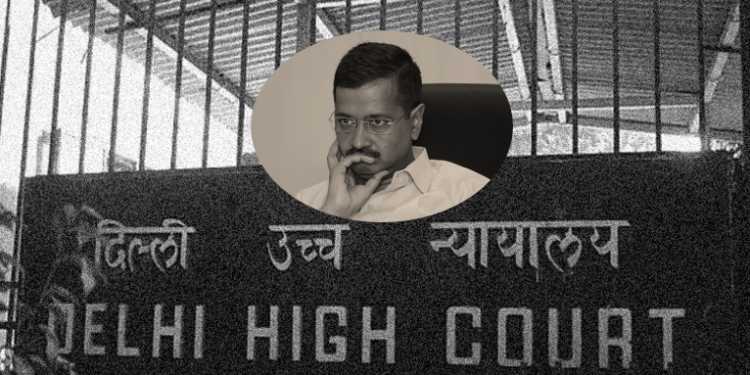It seems that Delhi CM, Arvind Kejriwal will need to extend his stay at the Vipassanna camp. Delhi High Court, which had been hearing a series of petitions relating to AAP government Vs Central government appears to have decided to rule in favor of the Central government. Ordinarily, this is not a big judgement, given the fact that GNCTD act under which Delhi is governed, divides powers between the Central government represented by the LG and Delhi government. However, the hue and cry raised by AAP government on LG’s powers since last year meant that it required a court of law to state plainly what was already amply clear otherwise. Delhi, given its position as the national capital, dangles somewhere between a Union Territory and a full-fledged state.
Unlike a Union territory, Delhi has its own legislature and government, but unlike a state, it does not have unfettered privilege of enacting legislations on subjects in the state list. Thus, the government of Delhi needs to take the Lieutenant Governor into confidence. It is astounding that the IIT-educated CM of Delhi was unable to fathom such a simple fact. It is stranger still that he chose to contest Delhi’s elections, knowing fully well that the city-state’s limited government structure would be unable to serve his lofty ambitions. With the Delhi High Court verdict going against AAP government, it is expected that they would approach the Supreme Court and waste the court’s time as well. It is also expected that Delhi government would hasten its plans for a referendum on statehood in Delhi, using it as a convenient tool to inflame passions to turn away the spotlight on the government’s otherwise lukewarm performance. Old time AAP-watchers are also not ruling out the possibility of a fresh season of Dharnas and Bandhs.
National Capital Territory:
Delhi was first provided a Legislative Assembly in 1951, before it was abolished in 1956. From 1956 to 1991, when the GNCTD Act came into force, Delhi was a Union territory headed by the Lieutenant Governor and was administered by Municipal bodies such as MCD, NDMC, DCB etc. Delhi Police by virtue of Delhi being the national capital reported into the Home Ministry. The GNCTD Act, created another administrative body, defining and limiting the powers of Delhi government. The GNCTD Act moved Delhi away from being a Union Territory, but did not vest as many powers as a state in India has. For instance the act says that the Council of Ministers, with the Chief Minister at its helm would aid and advise the Lieutenant Governor, who is also empowered to act on his discretion on matters where the Legislative assembly can make laws. Similarly, in case of difference of opinion between the Lt Governor and his Council of ministers, the matter may be referred to the President. However, in case of an urgency, the Lt Governor can take an interim decision based on his discretion. Effectively, all decisions of Delhi government need to be routed through the Lt Governor. Also, given his discretionary powers, he is not strictly bound by the advice of the Delhi government. In an ideal, non-confrontational environment, Delhi government must take the LG on board with their decisions and then implement them. This arrangement worked fine when Sheila Dixit was the Chief Minister of Delhi. The arrangement seems to have broken down only recently, ever since Arvind Kejriwal took on the reins of the city.
Is Delhi a state or a Union territory?
The existence of a legislative assembly or a Chief Minister does not entitle a region to become a state. In the past, many Union territories, e.g. Goa have become states, but Delhi is unique in the sense that a piece of legislation- the GNCTD act did not result in the Union Territory becoming a full-fledged state. It would be wiser perhaps to refer to Delhi as a glorified Union Territory, with all the embellishments of a state with none of its powers. Thus, the government of Delhi can make laws on subjects in the state list, with significant exceptions, but typically need the Lt Governor’s approval before they can be brought into effect. Similarly, the Parliament enjoys powers to undo the legislative actions of the Delhi government, given its constitutional status. Additionally, the fact that Delhi is also the national capital means that many of the usual subjects in the state list, land, police etc. are governed directly by the Central government. The existence of Municipal bodies also results in sharing of powers with the state government, thereby complicating what is already a very complex arrangement.
Delhi High Court in today’s judgement has sought to end the confusion on whether Delhi is a state or a Union territory. In its judgement, it has unequivocally established Delhi as a Union territory, with the Lt Governor as the administrator. The Delhi High Court heard a total of 9 petitions arising out of the clash between Delhi and Central governments before establishing that “AAP government’s contention that the LG is bound to act on advice of the council of ministers is without any substance and cannot be accepted”. The court also dismissed AAP Government’s plea challenging the Centre’s May 21, 2015, notification giving absolute powers to LG in appointing bureaucrats in the national capital. In short, the Delhi High Court has upheld the status quo as far as governance in the national capital is concerned.
Given the Delhi High Court judgement today, it would be best for everyone, especially the deprived denizens of India’s national capital if the AAP government would choose to tread on a path of conciliation and focus its energies on delivering governance. Unfortunately, that is one scenario that is most unlikely to happen.
https://www.quora.com/Is-Delhi-a-state-a-city-or-a-Union-Territory-UT


































